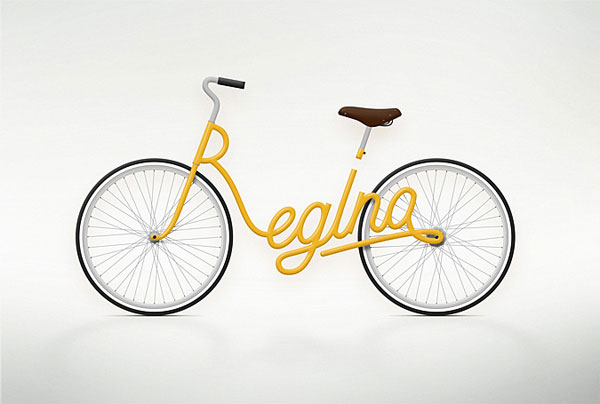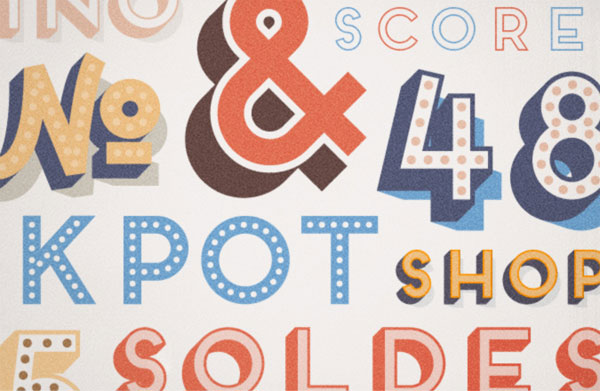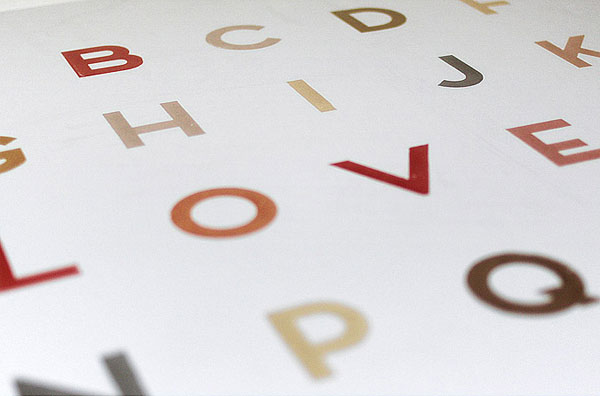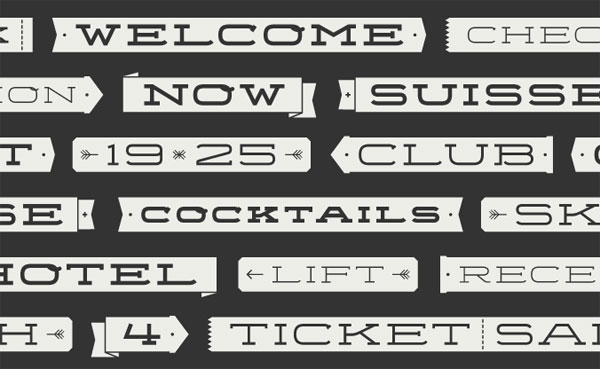One Minute With…
Juri Zaech

Hi Juri, thanks for taking the time to chat with One Minute With. Tell us a little bit about yourself and your work.
Hi Conor, thanks for inviting me here. I grew up in the Swiss countryside and work now as an art director in an advertising agency in Paris. I moved here nearly 5 years ago and live with my girlfriend and a cat in a small but nice apartment close to the heart of the city, and a five minute bike ride to my workplace. On the side, I do personal projects: based on my background, they mainly focus on typography and type design. I guess it is especially that kind of work that made you approach me for this interview. In recent years, these projects have become quite important to me – It balances out my work, connects me with people and I get recognition through it. It is very rewarding.
How did you get into design? Was there a defining point in your career, and if so, how did it shape you as a designer?
It's actually been a long process to get where I am now. And it for sure will keep developing. When I started out I didn't have a set plan where I wanted to end up, things just went their way. I decided to do an apprenticeship in typography and lithography instead of going to the university. My mom was a ceramist and my dad an artist. So there were some leads to choose something artsy, but I still wanted it to be a craft or trade. It was a pragmatic decision without realizing all the ways this could open up.
I lived in a small world back then and it seemed like I had reached a lifetime position when I got hired at a tiny local ad agency right after the apprenticeship. Seven years later came what you could call a defining point, I guess. I felt that my job wouldn't let me develop myself further. The conceptual part of creative advertising I discovered was one of the most thrilling tasks, but the opportunities were very limited. Because I didn't feel confident enough to just knock on a proper ad agency's door, I decided to leave Switzerland and attend a two year art direction portfolio program at Miami Ad School in Hamburg. Suddenly, I was among a group of people from all around the world striving to become great creatives. It was quite competitive, but in a good spirit. The school's system focuses mainly on practical tasks, so we experimented a lot and learned from each other. For me that was an incredibly interesting time because of all the new influence and the freedom of doing student work without boundaries again. It also gave me the confidence that I am able to realize projects on my own and don't need to be backed up by a company.
Part of that program were internships in agencies around the world. So we got to travel and work in China and the USA. Finally I ended up in Paris with my two team partners, one from Sweden and one from the USA. We form a team of three, which is unusual in advertising, but it works out great and our different cultural backgrounds contribute to the team.

If you could change one thing about your career to date, what would it be?
Looking back, I could have gone abroad earlier, but in the end, it doesn't really matter. I prefer to think that things just take their course.
When you released Frontage, you allowed users to download one of the weights for free with a tweet. Was that purely a marketing move, or did you also want to contribute to the community in some way? And with regards to the marketing side of it, how beneficial have you found such initiatives?
I knew about the "Pay with a Tweet" system through my advertising experience. It was developed by Innovative Thunder, an incredible creative team that went to the same ad school. In the process of making Frontage I felt that I could give it a try in releasing one weight for free through that service. People love free fonts and it seemed a great tool to increase visibility. So yes, it was a marketing decision — and a bit of an experiment. The result was remarkable! It's definitely something I’d consider for future projects. In the end, it's all about the amount of people who see your work. The bigger the exposure, the more you'll sell. "Pay with a Tweet" has the advantage that you reward people for doing you a favor. I like that.

So, you work in advertising, but have also made a few lovely fonts: How different are the two sides of your work? What challenges do each pose, and what skills can you directly transfer from one into the other?
The way I practice both of them is very different. Advertising is a full time job, it pays the bills and gives me 5 weeks of paid vacation a year. The work is creative but also very structured. Briefs, strategies and design guidelines are often set so that we only have a small space in which we have to develop our creative solution. That's challenging and very interesting at the same time, and the subjects are ever-changing.
On the other hand, experimental typography is something I practically never get to do. Having a background in typography, I started to miss that and started to do creations on the side. They are more like a serious hobby by now. And other than in my job, I am my own boss – There are no clients, creative directors or accounts. I work at my own pace and don't follow deadlines. I am entirely responsible for every aspect of a project. That is a great freedom but I'm glad I can bounce off stuff of my girlfriend – who is an art director too – to get a second opinion once in a while.
From a technical point of view, both sides are quite similar, the type stuff lets me be more experimental with executions but the real benefit is more on an inspirational level, and that works both ways.
Where do you see yourself – and your career – in, say, 5 years?
My girlfriend and I have a big book that explains in detail all the aspects of a self-sufficient lifestyle. It goes from building a house to setting up water wheels and of course everything about agriculture. It's really fascinating. This is probably not where I will be in five years, but it's a good thought to keep in the back of my head.
For now, I am in Paris and enjoying it. In the future I can imagine to reduce the advertising work in favor of my side projects. Taking on more freelance could be an option, something I hesitantly do at the moment because I just don't have enough time for it. All this is very hypothetical. It will be something that my girlfriend and me will figure out together, and of course my team partners in the agency.

If, in some Freaky Friday-like situation, you could live the life of another designer, illustrator or creative, for a day, who would it be, and why?
That guy who painted the walls of the Lascaux Caves in southern France 17,000 years ago. Time travel, yes please!
How would you define success? Do you think you've found it yet?
There are little moments of success here and there, and they are important to stay motivated. And when a project is well-received it is especially rewarding. In our profession you start from scratch with every new project, and while one success fades you're already working on the next project. That keeps me going and I don't tend to reflect on my career. For me, it is more important to know that I am satisfied, and that has also a lot to do with my life outside of design or advertising work.

And finally, what tips would you give to anybody who is looking to get started in design?
From my own experience (because I didn't do it enough) I would say it is important to move around quite a bit in the beginning. Trying out different areas in design to get a clearer picture of what your "dream position" is. For example, working in a very small or a big company are two different experiences, both are valuable. And that "dream position" will probably evolve with you as you grow.